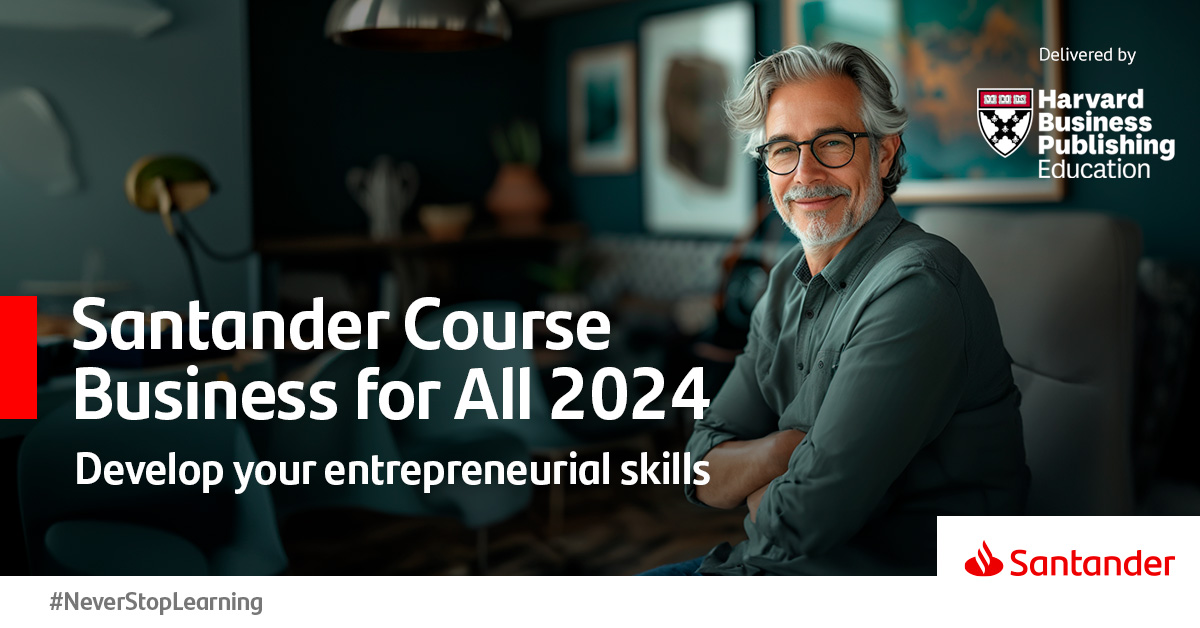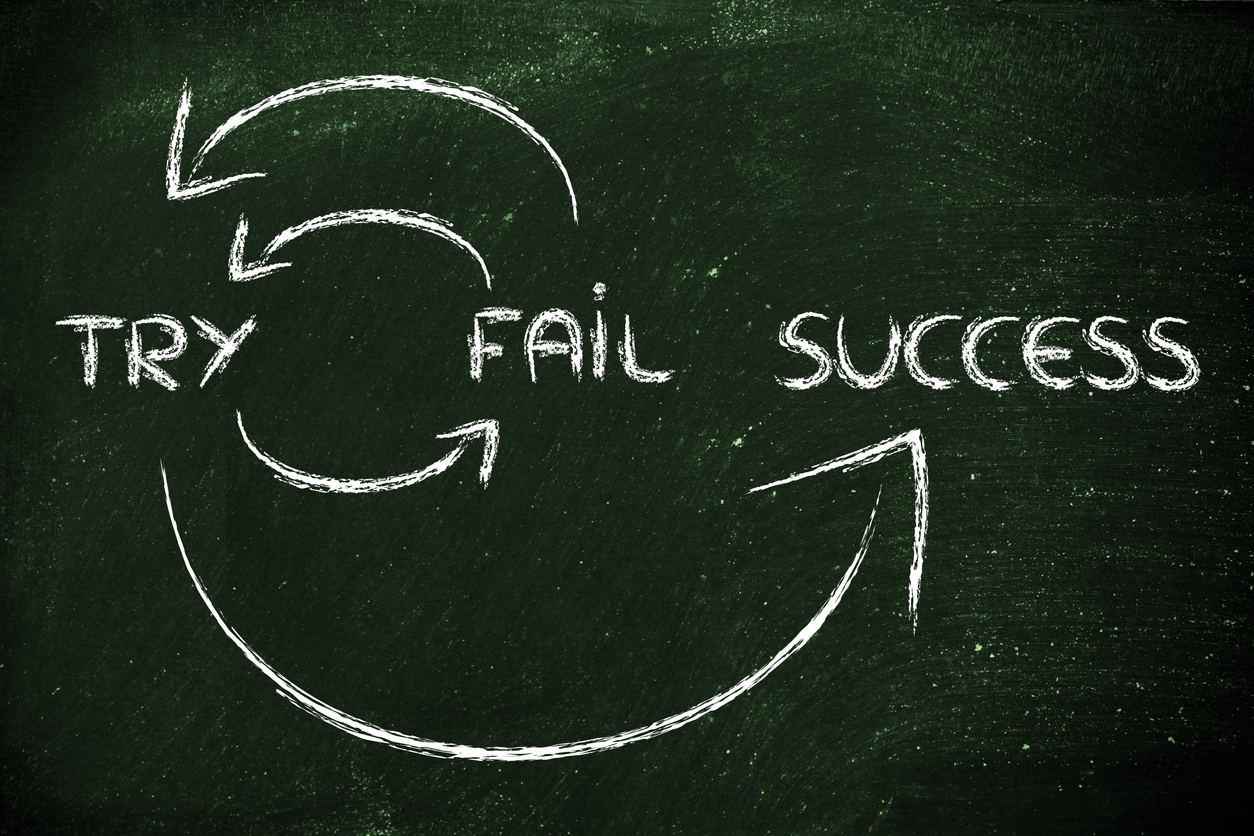Personal branding: how to stand out on LinkedIn
Nowadays, it is increasingly difficult to stand out in a labour market in which globalisation and technology mean more and more people are competing against one another for jobs, both locally and internationally.
Some companies even prefer not to advertise their vacancies to prevent the competition from uncovering their strategy, instead using their own recruitment channels such as databases, or referrals from trusted people. In fact, did you know that 3 out of 4 jobs aren't advertised?
Given the complexity of searching for a job, nowadays, the best way to get yourself noticed is with a personal brand.
What is personal branding?
A personal brand provides a brief description of a person in the workplace. In other words, you have the chance to convey who you are and what you stand for, with the goal of differentiating yourself from others and boosting your employability.
Moreover, personal branding offers a competitive edge not only when you're looking to access the labour market, but also when you already have a job but want a promotion or to take on new challenges within the company. For example, you might be the right person to take charge of a new project or occupy a position of greater responsibility, but what if you're not the only one? By creating your personal brand, you'll have a better chance to be able to advertise your competitive edge, your CV and the added value you bring, maybe even becoming a role model in your sector.
That's why designing your own personal brand is key to strengthening your professional reputation, to be able to take the initiative in negotiations, effectively communicate your skills and experience, and demonstrate your leadership capabilities. And these are just some of the benefits of learning how to develop a personal brand.
What are the benefits of having a personal brand?
Stiff competition in the current job market means you need to stand out to the employer with a well-designed personal brand, especially if you want to access 75% of those unadvertised jobs, given that this type of market increased some 5.5% in 2020, according to the report How to access vacancies on the hidden job market by The Adecco Group, and that in Europe alone, in 2022 some 66.1% secured a job thanks to their network of contacts, according to Eurostat data.
Such differentiation has undoubtedly become a pressing need given that, for example, only in Spain the unemployment rate stands at 13%, as indicated by data from the National Institute of Statistics (INE), making it a search where increasing numbers of candidates are interested in the few vacancies that companies do advertise. Moreover, with the rise of remote working, companies can hire low-cost, high-quality professionals based in far-flung locations that are nowhere near their headquarters.
That's why it's more important than ever to differentiate yourself from the competition through personal branding. In fact, according to the study Get noticed to get ahead: The impact of personal branding on career success, published in 2019, having a personal brand is an important factor if you want to achieve job success, as it's a way to advertise and highlight your identity as a professional compared to others in the same field, making you someone people look to in your sector. As noted by Tom Peters, a writer specialising in business management, in his book The Brand Called You: 'the only way to differentiate yourself in an increasingly competitive world is by managing your career the way major businesses manage their product brands.'
Like a trademark, a personal brand should create engagement, to interact with and be visible to society. This lets you advertise yourself and build trust, which is fundamental when it comes to strengthening the relationship with your company. At the same time, this greater exposure opens doors to potential job opportunities that can boost your career to the point of making you a leading name in your field.
To give an example of this, if a company committed to sustainability is looking to recruit a project manager, they are more likely to value a candidate with a certain environmental awareness, even if they haven't worked in corporate responsibility before. So, if you have a degree in engineering and you specialise in energy efficiency, you should promote your brand as a sustainability specialist, setting yourself apart from other professionals in your field of work.

How to design a successful personal brand
According to the career coach Lisa Quast, you should follow these six steps to create a successful personal brand:
1. Define your goals
Ask yourself what you want to achieve with your personal brand. Are you looking to get a specific job or join a certain company? Do you want to get to a managerial position or take the lead on a particular project? Questions such as these are what you need to ask yourself to clearly identify what your goals are when creating your personal brand, as this process needs to start with a solid strategic approach. Personal brands are not a matter of fashion, trends or tastes, but of forging a path that allows you to get exactly where you want to be in your career.
2. Study the market
Research the tactics of the professionals you admire or who have the job of your dreams. Can you discern a pattern that you can copy or improve? As for the content they generate or the strategy they follow, do you like it or not? Remember that personal brands are like product brands, so you have to study what’s behind the success of leading brands. And don't limit yourself to the local market, think on an international scale too, i.e., professionals who have cemented a global leadership in your sector.
3. Identify your attributes as a brand
When someone thinks of you as a professional, how would you like them to identify you? Or putting it another way, what message do you want your personal brand to convey? Pick key attributes as part of your identity and make sure to create content around them, so that when someone thinks of you, they can connect with those same attributes that characterise you. As with product brands, identifying what your values are along with your purpose and, additionally, knowing how to communicate these effectively, sets you on the right path to achieve career goals.
4. Assess the current position of your brand
Once you've set your goals and identified your attributes, you will need to analyse your personal brand’s current state of affairs. How do your peers, employers, bosses and team view you? This question will help you to determine the areas you need to improve, because a personal brand is not the same thing as a successful personal brand.
5. Create a strategic plan
Develop a strategic plan for both the verbal and non-verbal communication of your professional attributes, as this will be the best way to achieve the proper positioning of your personal brand. Within the plan, you should include what you need to communicate and how you need to communicate it, whether through words, images, your behaviour or your social media content.
Only with a sound, clear and precise strategy can you secure yourself a great spot on the labour map for your sector.
6. Manage your personal brand
Once you've completed the above steps, it's time to roll out the strategic plan. As you move forward, remember to analyse which content or formats are attracting the most audience. This is a learning process that will help you to improve your performance to achieve your professional goals.
Tips to manage personal brands
Continuing on from the previous point, follow these recommendations to more effectively manage your personal brand:
1. Use social media
In the world of work, the human side of an employee matters just as much as their professional persona. It's this facet that inspires confidence and empathy, and that you can publicise through social media, with posts that strike a balance between the personal and professional spheres.
Thanks to sites such as Facebook, Instagram, Twitter or, above all, LinkedIn ― thanks to its professional focus ― you can ensure comprehensive recognition of your personal brand. These will allow you to connect from all angles with a community of people who hold similar interests and who might view you as a role model in your sector thanks to your on-target content.
2. Network
Positioning yourself as a brand allows you to transcend your role at the company you work for or the circle you operate in. In other words, beyond the professional networks you've built thus far.
A personal brand gives you the chance to connect with strangers who can derive value from your know-how and experience through the content you create, as well as by attending conferences or trade fairs. While LinkedIn is the best social network to search for job opportunities on or to find talent, other social media also offer the chance to increase your visibility in other contexts.
3. Train as a business leader
One thing all successful personal brands have in common is leadership, one of the most sought-after skills in the present labour market. Nowadays, a professional identified as a leader is proactive, understands how to listen and act appropriately, and is able to connect people and coordinate teams to meet business goals. However, leadership is not a quality that tends to be developed at a university level, or even during postgraduate studies. That's why it's crucial to dedicate time and effort to developing this skill through specialist studies. This is a fundamental step in cementing a powerful personal brand.

How to design your own personal brand on LinkedIn
The LinkedIn platform was founded in 2003. With more than 600 million professionals currently registered, it has become the leading social network for job searches and staff recruitment, as well as being the main forum for professionals and companies to communicate. Did you know that 83% of companies use LinkedIn to boost their business?
In this context, your online profile can convey far more information about you than your CV. Why? One of the major differences lies in the dynamism, impact and reach that online profiles achieve. In fact, through your LinkedIn account, or even just by searching for you online, other people and companies can access your professional details.
Now, when it comes to your professional reputation, this may or may not work in your favour; it all depends on the quality of the information, i.e., the quality of your personal brand. So, to take the first steps when it comes to designing your personal brand, you should start by asking yourself two questions: what do you want to achieve and who do you want to reach? Put another way, if you want to get ahead with a personal branding strategy on LinkedIn, you need to set your objectives and pinpoint the characteristics that can help you stand out as a professional, boosting your value on the job market. To do so, focus on the most in-demand qualities when it comes to looking for work in a specific sector.
Once your personal brand has been defined, it's time to come up with a strategy, developing and honing it professionally. This process is known as "personal brand management” or "personal branding”.
What message do you want to get across? Crafting the message is crucial: what you say and do must be coherent, as well as the tone you use according to which employers or customers you want to reach. Let's look at an example:
'With a background as a creative writer in advertising agencies, three years ago, I set off on a journey to define my personal brand. Since then, I've given free rein to my imagination and creativity to put your value into words. Professional brand advisor. Passionate and resourceful. I help people to make their brand shine.'
In the case of this example, the profile of the person presenting their personal brand is that of someone experienced in fields related to creativity, who is targeting companies within that sector or potential clients looking for personal brand advisory services. To attract the target reader with this personal brand, the writer outlines their qualities in a familiar, positive and motivating tone, in line with the image of the creative, imaginative and self-confident person they seek to portray.
Lastly, plan the steps to take, both on and offline. Image is the first thing that will grab a potential employer or client's attention, making it the primary differentiating factor for you to pour your efforts into. For example, create a business card that reflects who you are, attend events related to your field of work, or organise workshops to make yourself known and demonstrate your expertise.
How to create your personal brand: Inspiring examples
How do personal brands succeed on LinkedIn? These two examples are sure to serve as inspiration for you:
Mary Barra: Mary Barra, CEO of General Motors, has more than a million followers on LinkedIn, where she regularly shares content related to her own and the company's values; a top executive who knows how to position her image and, alongside it, that of her company.
Alex Lopez: another consummate professional when it comes to crafting a personal brand is social selling expert Alex Lopez, included in the World's Top 10 Social Selling Influencers. He points out that “when there are already 4 billion internet users and 3.5 billion people on social networks but you're not on there, you’re wasting the chance you've been given to produce valuable content. Another important point is that people want to speak to people, that's why these profiles work better than company ones - they offer more credibility'.
In short, a personal brand is like the impression one professional leaves on others, hence how important it is to get it right and ensure it can't be easily dismissed. Personal brands should aim for that: to stand out, but without sugar-coating reality. Besides the ideas already mentioned, here are a few tips to improve your personal brand:
Be respectful and grateful, and interact with others. Put yourself out there in order to build up a network of contacts that can help you to create both business and job opportunities. To do this, you will also have to work on your communication skills.
Personal branding is always a work in progress. It needs to be tended to regularly, with quality content generated to keep it up to date. Otherwise, your profile won't be current and will fail to provide value.
Define your personal brand management strategy. Use tools such as social media (LinkedIn, Twitter, etc.) to reach a wider audience. Track the goals you've achieved and review your metrics in order to focus on what really interests you.
It is no longer enough to just have a profile on LinkedIn outlining your professional experience: you need to create an innovative personal brand which attracts attention and sets you apart from other candidates applying to the same jobs as you.
So, would you like to further improve your skills and get ahead in your career? Banco Santander is launching 5,000 Santander Course | Business for All 2024. This program, aimed at those who want to enhance their business skills, has been designed in collaboration with top experts from Harvard Business School Publishing, one of the most prestigious educational institutions in the world.
With this course, you will gain access to a 100% online, 9-week training program on which you will acquire the key know-how and skills to further your career. Depending on your professional objectives, you can choose one of the following courses:
Business Fundamentals: learn the essentials of marketing, finance, negotiation and customer experience.
Managing yourself: improve your skills in decision-making, time management and influencing without authority.
All courses are delivered by top-tier experts and are free to participants. And you don't need to have a degree or be a Banco Santander customer. On top of that, they are available in English, Spanish or Brazilian Portuguese.
You will have the opportunity to acquire all the necessary knowledge and skills via on-demand content, virtual discussions in live sessions with mentors and learning facilitators, interaction with your peers, exercises and tools with which you can practice, then transfer the knowledge to your workplace. In addition, upon completion, you will receive a certificate from Harvard Business School Publishing.
Are you over 18 and want to develop key skills to get ahead in the workplace? Sign up for Santander Course | Business for All 2024 and whether you get it or not, remember: never stop learning.

More interesting posts to read...
-
 12/04/2024 | Santander Universidades
12/04/2024 | Santander UniversidadesGrowth mindset: examples in the workplace to develop the right attitude toward challenges
Card text -
 01/03/2024 | Santander Universidades
01/03/2024 | Santander UniversidadesThe sandwich technique: how to deliver criticism in an assertive way
Card text
